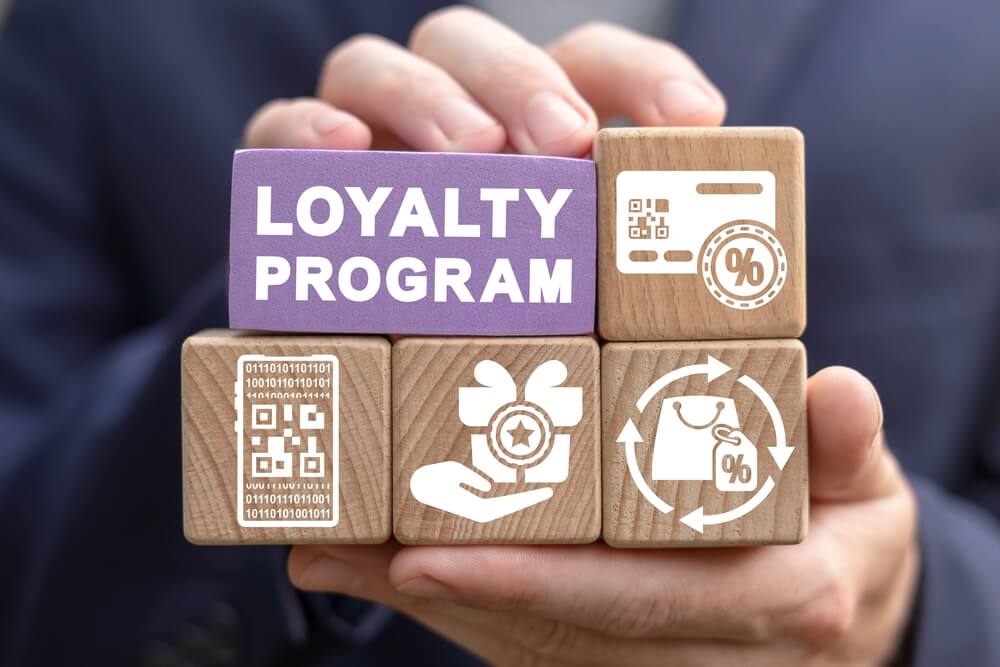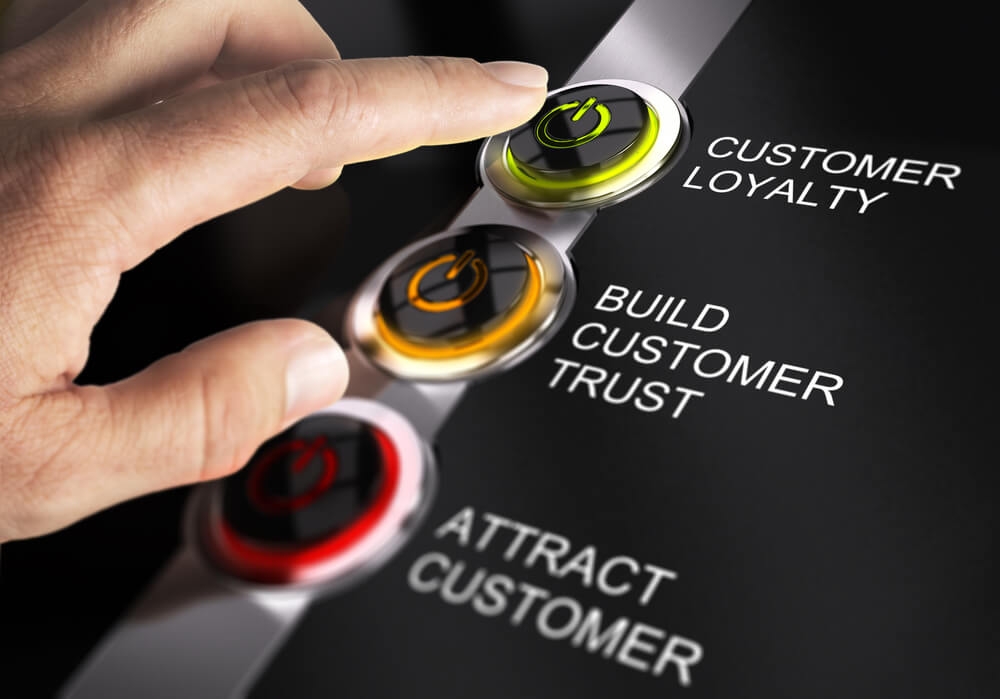
Beyond Transactions: Fostering B2B Customer Loyalty (7 Tips)
Promoting customer loyalty in business-to-business (B2B) is crucial for sustained success. It establishes enduring relationships, fosters trust, drives repeat business, and builds a brand.
This article explores techniques that promote customer loyalty:
- Providing exceptional customer service
- Customizing products and services to client needs
- Establishing clear communication channels for feedback
- Implementing loyalty programs and incentives
- Creating educational resources for continuous value
- Building trust through consistency and reliability
- Celebrating milestones
Read below to learn how to implement these strategies for excellent B2B branding and long-term customer relationships. Let’s go!
Tired of investing in Search Engine Optimization without getting any results? See how Digital Authority Partners turns that around!
1. Building Strong Relationships through Exceptional Customer Service
Personalizing customer interactions builds deeper connections and trust by addressing the audience’s needs. These efforts then enhance customer experience and contribute to long-term loyalty and advocacy.
Learn to build a solid customer-centric B2B relationship with these strategies:
- Anticipate their needs. For example, email them about the support they require when they sign up for the mailing list.
- Consider creating a 24/7 customer support team or using chatbots to immediately answer general questions and concerns.
- Tailor interactions based on their preferences, past interactions, and specific needs. Use client data and insights to personalize communication, offers, and solutions.
- Go above and beyond in providing support and assistance. Offer value-added services, resources, and educational materials that help them optimize their use of products or services.
- Be transparent and honest in communication, especially when addressing issues or challenges.
- Solicit feedback about their experiences with products, services, and customer support. Listen attentively to their suggestions, concerns, and preferences. Take concrete actions to continuously address concerns and enhance the customer experience.
Prioritizing proactive and responsive customer support fosters long-term loyalty by making clients feel valued throughout their journey.
2. Customizing Offerings to Address Unique Client Needs

Customizing offers to match the client’s needs also promotes loyalty. Tailoring products or services demonstrates your commitment to customer satisfaction, enhancing trust and engagement.
Here are ways to effectively customize offerings for B2B customers:
- Schedule regular meetings or surveys to assess their evolving needs, preferences, and challenges. Gather feedback, insights, and suggestions to better understand their requirements.
- Divide B2B clients into segments based on industry, size, geographical location, or other relevant criteria.
- Develop flexible products or services through modular features, add-ons, or customization options that allow clients to tailor their solutions to their specific requirements and budgets.
- Offer consultations and guidance to help them identify and articulate their needs.
- Craft customized service agreements or contracts that outline the specific deliverables, timelines, and performance metrics.
- Continuously monitor client satisfaction levels, usage patterns, and feedback to assess the effectiveness of customized offerings.
A personalized approach increases client satisfaction and contributes to long-term retention and advocacy. Be proactive in identifying evolving needs or emerging trends and adapt offerings to sustain their relevance and value for the B2B clients.
3. Establishing Clear Communication Channels for Feedback
Clear communication channels encourage open and transparent feedback. It helps create an environment where clients can openly share their opinions, concerns, and suggestions.
Feedback also improves products, services, and customer experience and demonstrates your commitment to listening and responding to client needs, building trust and loyalty over time.
Develop clear communication channels for feedback with these ideas:
- Offer diverse channels for clients to share insights and concerns. Examples include email, phone, online forms, live chats, and dedicated feedback portals.
- Encourage them to leave honest and transparent feedback by emphasizing the importance of their input and assuring them that their opinions are valued and respected.
- Proactively solicit feedback at various touchpoints throughout their customer journey, such as during after-product demos, service interactions, or project milestones.
- Acknowledge the feedback promptly and professionally, regardless of whether it is positive or negative.
- Analyze feedback data to identify common themes, trends, and areas for improvement. Use client feedback to drive meaningful improvements in products, processes, and customer service.
These tips help you establish effective communication channels for feedback and foster meaningful conversations that enhance customer loyalty and satisfaction.
4. Implementing Loyalty Programs and Incentives

One effective way to get repeat business is by offering loyalty programs and incentives. It motivates B2B clients to continue engaging and investing in your products or services while tracking their success provides insights on factors that influence customer retention.
Follow these strategies to implement powerful loyalty programs and incentives that build customer loyalty and B2B branding:
- Research to know the incentives and rewards that the market finds engaging.
- Develop a structured reward system that incentivizes repeat business and ongoing engagement. Consider offering discounts, rebates, or volume-based rewards.
- Provide exclusive benefits. Examples include access to premium features, priority support, customized solutions, or invitations to exclusive events.
- Communicate the benefits and mechanics of loyalty programs. Write policies about how the program works, the process of earning rewards, and what to do to redeem them.
- Monitor the effectiveness of the loyalty programs with the right metrics and key performance indicators, such as net promoter score, customer retention and repeat purchase rates, customer lifetime value, and churn rate.
- Continuously review and update loyalty programs based on feedback and changing market dynamics.
- Keep the program fresh and relevant by introducing new incentives, rewards, or features that resonate with clients and encourage ongoing participation.
Loyalty programs encourage retention and promote long-term partnerships by rewarding customers for their repeat business, making them feel valued and incentivizing them to continue choosing your brand over the others.
5. Creating Educational Resources for Continuous Value
Another way to foster loyalty is to develop educational B2B marketing content to share valuable industry insights and best practices. Doing this adds more value to your products and services and improves branding by letting customers feel you support their growth.
These techniques help you create effective, helpful educational resources:
- Conduct thorough research to uncover the knowledge gaps and challenges of your B2B customers. Tailor the content to address these needs.
- Diversify content formats to align with user intent and the different stages of the customer journey. For example, write blog posts or schedule webinars to raise brand awareness and increase interest. Publish case studies and comparison guides for prospects in the consideration or evaluation phase.
- Provide actionable insights, best practices, and practical tips that help B2B clients overcome challenges and achieve their business objectives.
- Make your content accessible. Publish it on your website, set up a blog, or send it as a newsletter.
- Promote engagement and generate more relevant content ideas by encouraging clients to ask questions, share feedback, and participate in discussions.
- Host live webinars, Q&A sessions, or online forums to let prospects interact with subject-matter experts and peers.
- Use analytics to track the performance of your content. Monitor metrics such as engagement rates, downloads, and client feedback to assess effectiveness and identify areas for improvement.
Consistently providing valuable educational resources builds trust in the brand, deepens relationships, and establishes customer loyalty.
6. Building Trust through Consistency and Reliability

Consistency improves reliability, which then fosters customer loyalty. Delivering on promises and commitments makes B2B customers feel reassured and confident to do business with you. It also displays your dedication to providing quality products, services, and experiences.
Consider these strategies to help you stay consistent in branding and customer service:
- Set clear expectations about your products and services. Outline deliverables, timelines, and service levels in contracts to avoid misunderstandings.
- Strive for excellence in every aspect. Maintain high standards of quality and reliability in products, services, and customer support to consistently meet or exceed client expectations.
- Keep clients informed about any changes, updates, or developments that might affect their experience.
- Honor commitments and promises to clients, whether meeting deadlines, delivering on specifications, or resolving issues.
- Encourage clients to provide feedback on their experiences with your products, services, and support.
- Make it easy for clients to contact and receive timely assistance or support. Offer multiple channels for communication, such as phone, email, live chat, and social media. Respond promptly to inquiries.
Reliability builds trust, strengthens relationships, and fosters long-term client loyalty. With these marketing strategies, you cultivate a reputation for consistency.
7. Celebrating Milestones and Anniversaries
Celebrating long-term relationships allows you to show appreciation for your clients’ trust and commitment over time. It also strengthens the bond and re-emphasizes the value of the partnership.
Acknowledge milestones and anniversaries with these ideas:
- Create programs to formally recognize client relationship milestones such as anniversaries. For example, send a personalized gift with a handwritten note every fifth, tenth, and fifteenth anniversary of the relationship.
- Tailor celebrations to reflect the customer’s unique preferences, interests, industry, and company culture. Suppose you have a long-term tech client who has secured a $10 million profit with your support. The latest VR headsets or tickets to local tech conventions and events are excellent gifts for their top performers.
- Create exclusive offers on milestone anniversaries. Examples include discounts on future purchases, upgrades to premium services, or complimentary add-on features.
- Highlight success stories and testimonials from long-term clients to celebrate their achievements and showcase the value of partnership. Share these stories on the website, social media channels, and other marketing materials to inspire other clients and reinforce loyalty benefits.
Creating special offers or events for loyalty anniversaries presents a personalized approach and reinforces the value of the partnership.
Summing Up
Building robust and enduring client relationships is vital for your sustained success. It compresses the sales cycle, increases the customer lifetime value, and improves B2B branding.
This article lays the foundations for long-term partnerships that drive mutual growth. These include building trust, delivering consistent value, actively listening to client feedback, and embracing a customer-centric approach.
If you need more personalized and advanced B2B marketing support, contact Digital Authority Partners (DAP) today to schedule a free consultation.
Want To Meet Our Expert Team?
Book a meeting directly here




